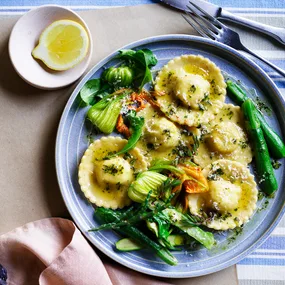It isn’t Christmas without a ham, but for baking, not just any old ham will do. Hams differ greatly in quality; you want something that’s naturally smoked, and with a thick layer of insulating fat to protect the meat during cooking. It’s the glaze, too, that makes it really special.
Typically a mixture of sugar, mustard and lime or lemon juice, a glaze is a simple and really delicious complement to the salt and smoke of a good ham. Bear in mind a few key points and you’ll soon be glazing with the best of them. Removing the skin in a single piece is important as it can be used later in the storage of the ham. Glazing is a technique that requires some attention: its success depends on building the layers of the glaze during the cooking process, like lacquering a fine piece of furniture. The sugar in the glaze will caramelise to a deep mahogany – you should aim to get the colouring as even as possible. A little water in the base of the roasting pan will prevent any excess glaze burning as it runs off the ham while baking.
To store your ham, buy a ham bag or use a clean old pillowcase. The ham bag or pillowcase should be rinsed in cold water and a little vinegar and wrung out every few days to prevent bacteria forming.
Ingredients
Method
Main
The ham leg we have chosen for this recipe is from a Kurobuta pig. It has a thick layer of fat and even marbling which prevents it drying out during baking.
Notes









